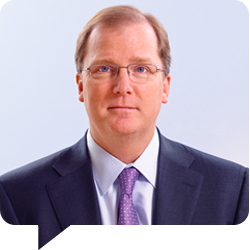Advisors make the case for active investment management
Advisors make the case for active investment management

Financial advisors favor third-party active investment management for a wide variety of reasons: access to modern analytical strategies, emphasis on risk mitigation, and the ability to be responsive to current market conditions and deliver high levels of client satisfaction over full market cycles.
Our editorial staff has interviewed dozens of successful financial advisors from every region of the nation. Their advisory firms represent many different business models in the industry and come in all “sizes and shapes.” But these advisors all share a commitment to bringing leading-edge portfolio management strategies and approaches to their clients.
They also share a strong desire to find investment solutions for their clients that will stand the test of time. Simply put, this means employing strategic approaches that can generate competitive returns in both bull and bear markets through the use of strong risk-management techniques. It also means adopting a planning and investment philosophy that can accommodate investors all along the risk spectrum and with varying levels of financial sophistication.
Periodically, Proactive Advisor Magazine features excerpts from those interviews that highlight advisor responses to a specific question about their attitudes regarding an aspect of active investment management.
For this issue, we asked advisors:
 I use active money-management strategies to help improve the probabilities for success when I manage a client’s portfolio. It was probably around 2010 when I fully realized that there had to be a better way to manage clients’ assets … especially clients that are retired and can’t afford to, or choose not to, see their assets drop by 30%, 40%, or even 50%. There are just some wonderful active-management stories out there that are tested, both in terms of actual performance in using backtesting methodologies and in a forward look to helping my clients increase their odds of success.
I use active money-management strategies to help improve the probabilities for success when I manage a client’s portfolio. It was probably around 2010 when I fully realized that there had to be a better way to manage clients’ assets … especially clients that are retired and can’t afford to, or choose not to, see their assets drop by 30%, 40%, or even 50%. There are just some wonderful active-management stories out there that are tested, both in terms of actual performance in using backtesting methodologies and in a forward look to helping my clients increase their odds of success.
I’m very much a fan of diversifying various active money-management strategies, because each has a different algorithm or a different objective, or an alternative way of managing money. That’s why I like to put a pool of active strategies together, because I am diversifying the big-picture, underlying strategy.
 I do not think parking client money in a variety of mutual funds is really managing money. I think it makes much more sense to employ the services of an entire investment team with the skill and training to handle billions of dollars. They are professionals dedicated to doing that and nothing else.
I do not think parking client money in a variety of mutual funds is really managing money. I think it makes much more sense to employ the services of an entire investment team with the skill and training to handle billions of dollars. They are professionals dedicated to doing that and nothing else.
Everyone needs to have asset protection on several fronts: through active investment management, through strong diversification, and in having investments with different time horizons, risk, and rates of return. Each element of a well-designed portfolio will likely have different performance characteristics during different types of market environments. The idea is to be proactive and have this diversification working to the client’s benefit regardless of how the overall markets are doing.
 Clients can be their own worst enemies—their guts and brains are constantly at war. Individuals do not receive real training in financial or investment matters, and most people fail miserably on their own, which is why active management by a professional makes so much sense.
Clients can be their own worst enemies—their guts and brains are constantly at war. Individuals do not receive real training in financial or investment matters, and most people fail miserably on their own, which is why active management by a professional makes so much sense.
There is no one definition of active management, and active management comes in countless varieties. I use many of the tools and third-party money-manager strategies on a case-by-case basis, although certainly many portfolios look similar, and there are efficiencies of scale. I value active management, but not necessarily too active, and tend to avoid strategies that make lots of trades that may incur added trading costs. … The commonality of all of these active-management strategies is a constant monitoring of the current market environment and the willingness to be flexible in the face of changing market conditions.
 Investment management for clients is not an all-or-nothing proposition when it comes to building the proper allocations within a financial plan. … I think every investment portfolio has to have the capability to play both offense and defense. Over the last five years, I have introduced a higher level of tactical money management for most clients. Our firm has selected some of the top companies in the active-management industry to serve our clients and help navigate the ups and downs of the market.
Investment management for clients is not an all-or-nothing proposition when it comes to building the proper allocations within a financial plan. … I think every investment portfolio has to have the capability to play both offense and defense. Over the last five years, I have introduced a higher level of tactical money management for most clients. Our firm has selected some of the top companies in the active-management industry to serve our clients and help navigate the ups and downs of the market.
While there are no guarantees with any investment approach, my belief is that a blend of tactical and passive strategies can better manage market cycles than a passive approach alone. And depending on the client’s risk profile and overall investment objectives, the tactical strategy element can be dialed up or dialed down to best fit a specific client’s needs.
 While managing risk comes into play in every area of a financial plan, it is especially pronounced on the investment side. My goal is to focus on the investment strategy that has the highest probability of achieving the desired results while understanding and mitigating the associated risks.
While managing risk comes into play in every area of a financial plan, it is especially pronounced on the investment side. My goal is to focus on the investment strategy that has the highest probability of achieving the desired results while understanding and mitigating the associated risks.
The advancements in portfolio management through third-party active managers have been remarkable. They use technology to identify the most appropriate strategy combinations for a wide variety of risk profiles. They also use models and algorithms to guide decision-making on when to be in or out of the markets, when to use leverage, and when to emphasize or de-emphasize certain asset classes or sectors. All of this helps my clients to achieve the goals we have set up for the long term, and provides a great deal of peace of mind—they do not have to worry about every little wiggle in the markets.
 In the 1990s, the markets were doing great and the traditional theories of portfolio allocation were working pretty flawlessly for clients. Since then, the fundamental change in the nature of markets, globalization, and the access to data has really altered all of the old models. Risk management, which was usually confined to the limited abilities of those allocation models, has taken on a whole new perspective and emphasis given the severe market corrections we have seen since 2000.
In the 1990s, the markets were doing great and the traditional theories of portfolio allocation were working pretty flawlessly for clients. Since then, the fundamental change in the nature of markets, globalization, and the access to data has really altered all of the old models. Risk management, which was usually confined to the limited abilities of those allocation models, has taken on a whole new perspective and emphasis given the severe market corrections we have seen since 2000.
The nature of my client base has also affected how I think about risk. The majority of my clients have more or less matured along with me and have a very different outlook as they think about or enter into retirement. They are not willing to subject their lifelong building of assets to the whims of the stock market. Their first priority is to protect what they have, and the growth of assets is a close second. They are very receptive to new ways of thinking about investment strategies.

